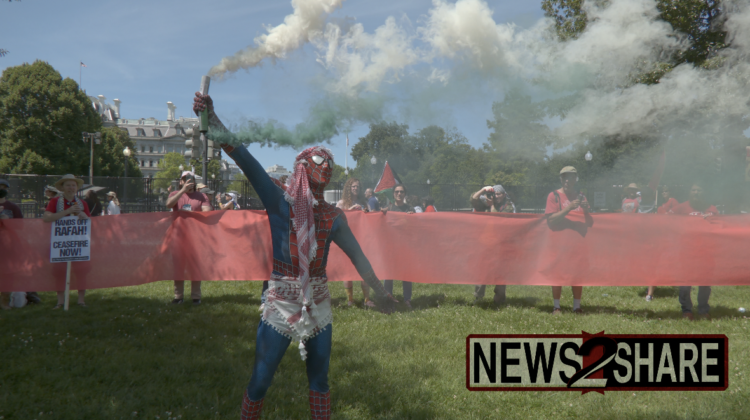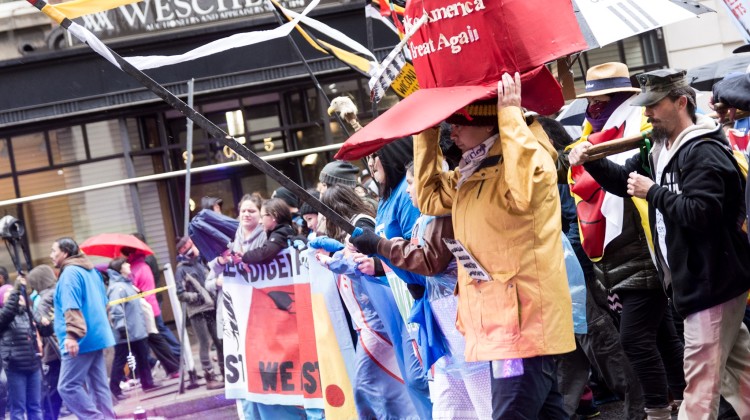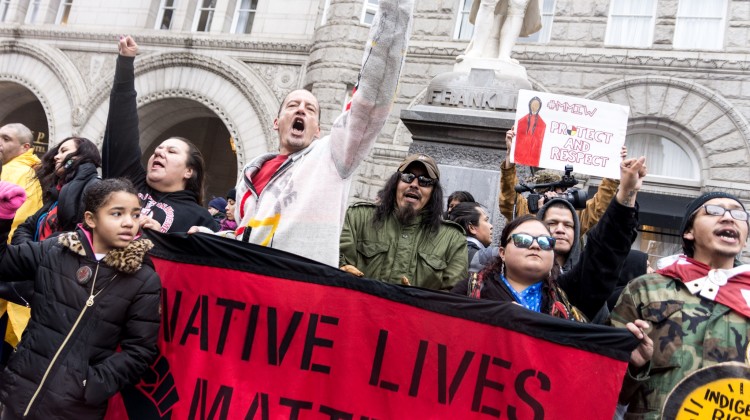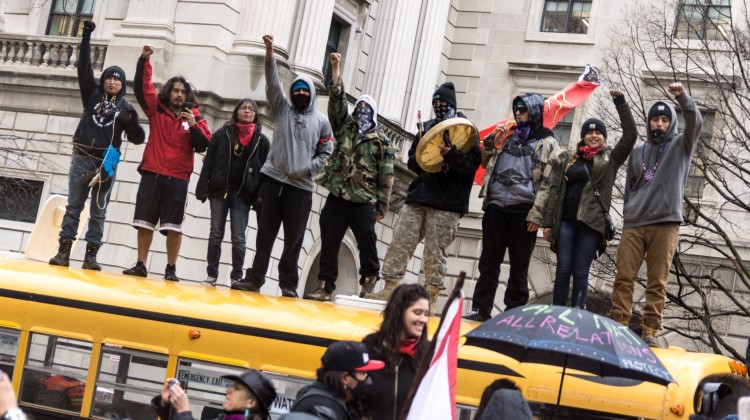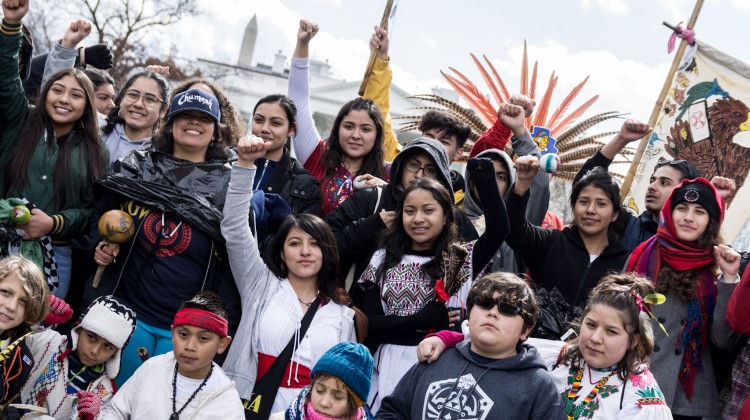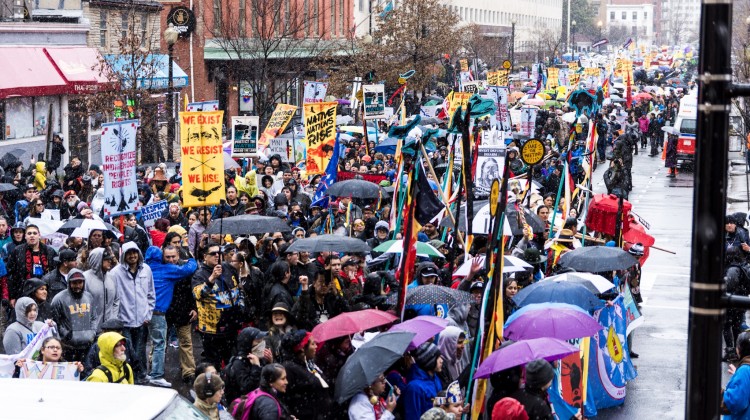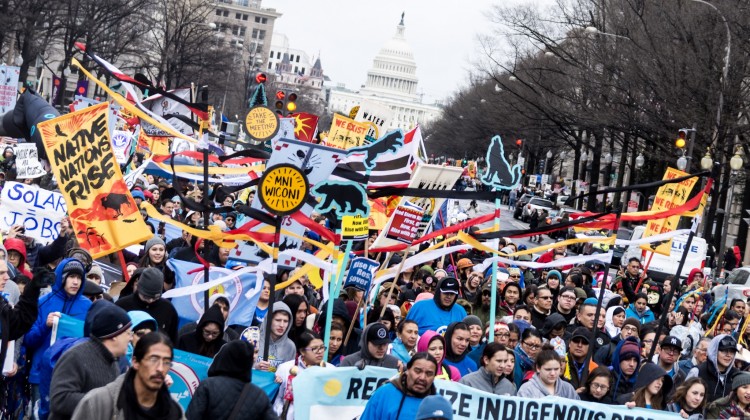“Wake the hell up!”
Filmed by Ford Fischer
Article and Photos by Alejandro Alvarez
“We exist, we resist, we rise.”
It’s mid-morning in Judiciary Square, a maze of government offices in the heart of the nation’s capital. Well over 2,000 people are gathered in the roadway in front of the Government Accountability Office, headquarters to the US Army Corps of Engineers. The strong scent of burning sage drifts through the poncho-clad crowd, huddled in shelter from driving sleet on the late winter morning.
This is Native Nations Rise. Thousands gathered in Washington, DC on Friday, hoping to send the new administration a message that, despite setbacks in the battle against the Dakota pipeline, the fight for clean water and Earth goes on – it’s just changed place.
“Our ancestors have inhabited that land for over 8,500 years,” said one Native American marcher about the significance of Standing Rock, “our writings are still on the rocks, we use the plants for medicinal and spiritual purposes – that land has a pulse, as does the entire Earth.”
It’s been almost exactly a year since the struggle between the indigenous community and Army Corps of Engineers began at the Standing Rock reservation in North Dakota. Over 300 injuries and nearly 500 arrests later, the controversial Dakota Access pipeline is moving forward despite passionate outcry and, occasionally, even bloodshed.
Native Nations Rise, billed as “Standing Rock’s next stand,” was a chance to vent that frustration while plotting a course forward for the indigenous rights movement and anti-big oil movements. Leaders of the Standing Rock Sioux tribe issued a call to action shortly after Trump’s election and the revival of the Dakota pipeline project. And, despite the initially miserable weather, people answered. By the thousands.
“Wake the hell up,” said Mike Willenborg, in DC by way of Detroit. Willenborg, a veteran of the 1960’s civil rights movement, drew comparisons between that struggle and the fight for Standing Rock, where he’d been months prior. “I’d tell the Corps that the cultures that were here before us are valid, and the property they own is valid,” he added.
After a round of impassioned chants including “black snake killer” and “Mni Wiconi” – Lakota for “water is life” and the rallying cry for the anti-Dakota pipeline movement – thousands set off on a long march through downtown Washington for the White House. The sleet continued, but the march didn’t stop.
A dozen or so activists with long wooden poles wrapped in white pieces of fabric worked their way to the front of the march on Pennsylvania Avenue. They sprinted up to the Trump International Hotel in formation. “We’re building a teepee,” they announced to media.
Within minutes, a tall tent overshadowed the entrance. Marchers climbed statues and a nearby rally-owned bus for a glimpse of a Native American prayer dance at the doorstep to Trump’s DC property. Before long, they were on the march again.
“What they’re literally doing is genocide,” said a woman of the urgency underlying Friday’s action, “as soon as that pipeline breaks, in 30 minutes or less, all of the water in the reservation is contaminated.”
Marchers gathered in Lafayette Square outside the White House for a rally with a wide range of speakers, including indigenous activist Faith Spotted Eagle, who received one protest vote from Washington State in the electoral college. Others continued to peacefully protest in the park for hours after the march reached its final destination.
“I’m fighting for native sovereignty, for cultural sovereignty,” said Carl Moore, dressed in traditional indigenous garments. “Native Americans have been trampled for years, this country is built upon oppression of Native Americans, of black people – globally, actually.”
He added: “I’m here to fight for humanity.”


